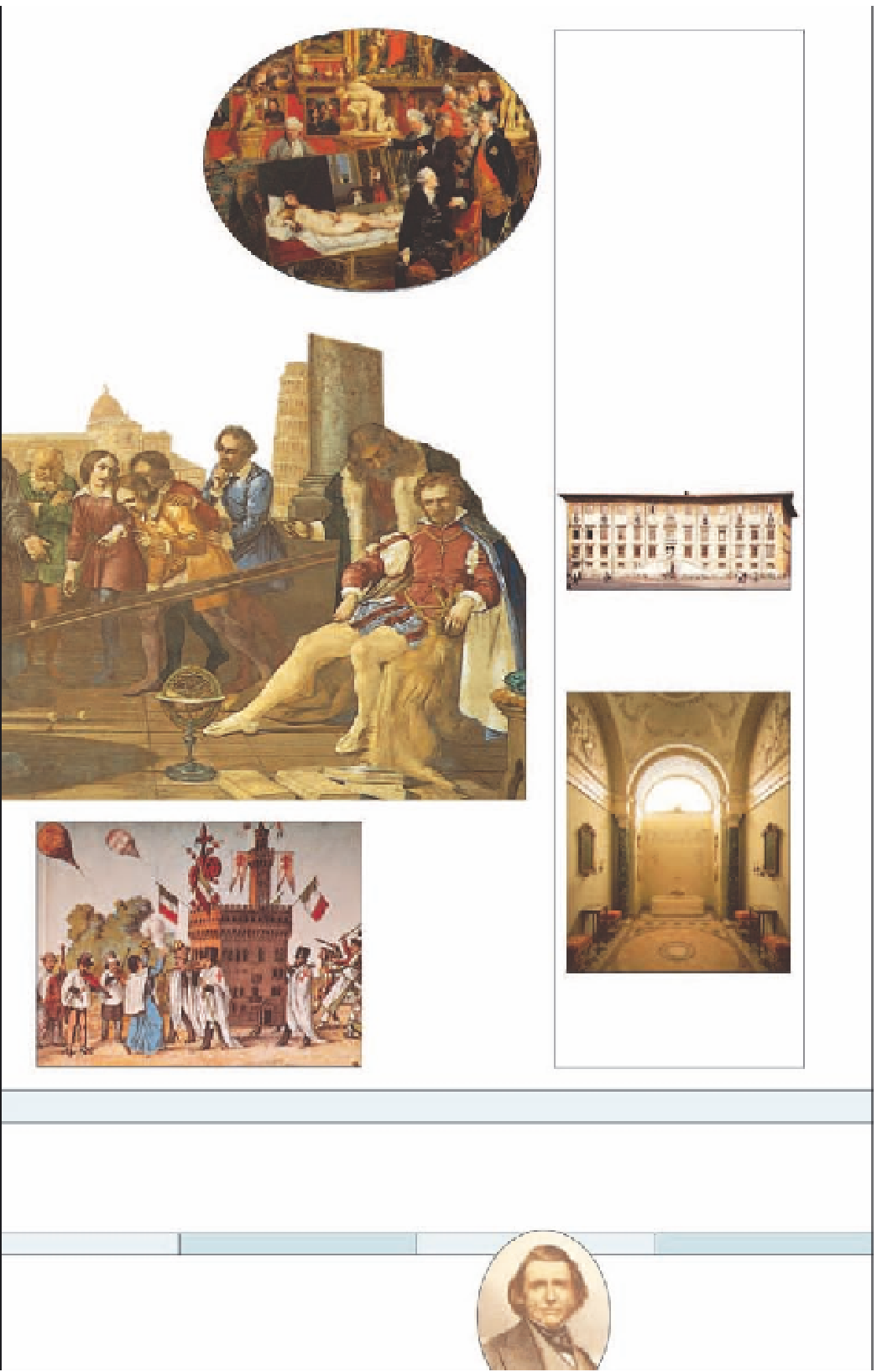Travel Reference
In-Depth Information
The Grand Tour
It became fashion-
able for wealthy
18th-century
European
aristocrats to
visit Tuscany.
This detail from
Zoffani's
Tribuna
(1770) shows a
tour of the Uffizi.
WHERE TO SEE
GRAND DUCHY
TUSCANY
The Uffizi art collection
(see
pp80-83)
was assembled
by the Medici at this time,
along with the collections
in the Palazzo Pitti
(pp120-
23)
, the building from which
the Grand Dukes ruled
Tuscany for over 300 years.
The story of Galileo and his
contemporaries is told in the
Museo di Storia della
Scienza in Florence
(p74)
.
The frescoes of the Sala del
Risorgimento, in
the Palazzo Pubblico, Siena
(p218)
, depict the events
that preceded the final
unification of Italy.
Galileo conducted
his
experiments using
specially designed
equipment
(see p74)
.
Cosimo II
gave
refuge to Galileo
after the Church
accused him
of heresy.
Palazzo dei Cavalieri
Francavilla's statue of Cosimo I
(1596) marks the entrance to
Vasari's ornate Palazzo
(p156)
.
National Rule
Florence ran up
huge debts while
serving as the
Italian capital. This
cartoon shows a
protest against the
seat of power (the
Palazzo Vecchio)
being transferred
to Rome.
Napoleon's Bathroom
Napoleon never used this bath-
room (1790-99), built for him
at the Palazzo Pitti
(pp120-23)
.
1796
Napoleon's first
Italian campaign
1799
France defeats Austria: Tuscany ruled by Louis
de Bourbon, then by Napoleon's sister, Elisa Baciocchi
1815
Napoleon defeated at Waterloo
1765
Grand Duke
Leopoldo I introduces
many social reforms
1822
Shelley drowns near Livorno
1840
Ruskin visits Florence
1750
1800
1850
1814
Napoleon exiled to Elba
1743
Death of Anna Maria
Lodovica, last of the Medici
1865
Florence
chosen as
capital of new
Italian state
John Ruskin
(1819-1900),
who revived
critical interest in
the Renaissance
1871
Italian capital
returns to Rome
1737
End of Medici dynasty; rule
passes to Austrian House of Lorraine














































